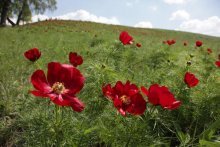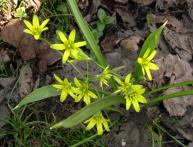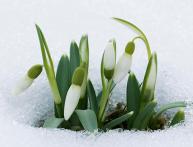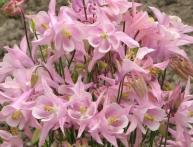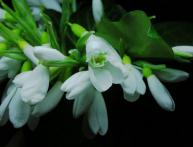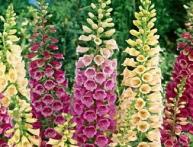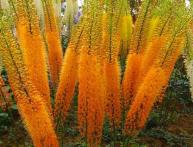Endangered flower of the steppes wild peony

Wild peony is a perennial herbaceous shrub with single red flowers and deep green stems.
This is a flower with bright red or dark purple petals, and with a slight openwork terry along the edges of the petals and with a bright yellow core, the foliage of wild peonies is of a soft wormwood hue, from a distance reminiscent of pine needles or fern stems. The population of wild peony in isolated locations varies from one to one hundred individuals.
A wild peony shoot grows from 10 to 40-50 cm in height, a cylindrical bush, on the top of which a bright crimson-red small flower (8-10 cm in diameter) blooms. Like all peonies, the wild peony does not bloom for long, only a few days, but it blooms several months earlier than some of its ornamental garden counterparts.
The plant is highly poisonous! Not recommended for internal use!
Content:
Distribution and habitat of wild peony
Peony wild in its natural environment can be found in many countries
- Russia (European part, Caucasus)
- Ukraine
- Iraq
- China
- Afghanistan
- Türkiye
- Georgia
- Azerbaijan
It grows in open steppe areas, forest edges, and open steppe areas, preferring sufficient sunlight to live. Sometimes found growing on calcareous slopes. Wild peonies are resistant to frost; moreover, they need a cold period for future flowering.
The peony usually blooms in mid-to-late May; its flowering period is short, it lasts only a few days, but is unusually bright. After the end of the short flowering period, seed pods with ripened seeds are formed on the stems. A characteristic feature of peony seeds is that they lose their viability in a very short time, so it is recommended to sow them immediately or store them in the refrigerator for planting in the autumn.
The legend about its origin of peonies
Exists beautiful legend about the appearance of a peony flower. Once upon a time, in ancient times, there lived a doctor Peyan, who knew how to treat any disease with herbs. And people stopped turning to the gods for salvation and went to the doctor. For this, the gods were angry with the doctor and wanted to eliminate him, but one of the gods took pity on him and hid him, turning him into a peony flower.
Peony is wild and actually has medicinal properties. The parts of peony most used for medicinal purposes are the rhizomes and foliage; fresh leaves are rich in vitamin C; peony contains (in all its parts) flavonoids and tannins.
In folk medicine of the North Caucasus, an infusion from this flower is used to treat anemia and pulmonary diseases, but it is necessary to remember that the plant is poisonous, and strictly adhere to the dosage and method of making medicines from this flower.
Cultivation of wild peony
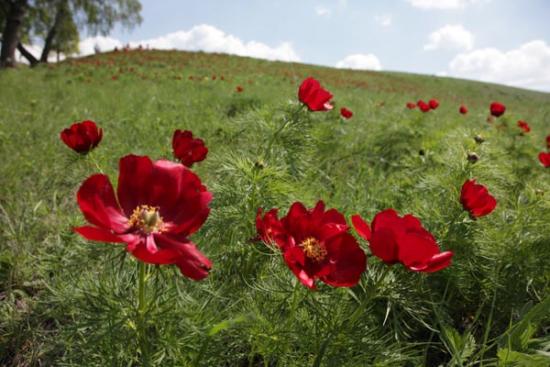
In nature, wild peony is becoming less and less common, so it is listed in Red Book like an endangered plant. But now the fashion for gardeners to cultivate wild peony is spreading. The thin-leaved peony has been cultivated since the end of the 18th century, but it is still most popular in Europe and America, although its popularity has begun to grow in the Russian garden market.
Wild peonies are usually propagated by dividing the bush; replanting is traditionally recommended in August-September, since peonies, as is known, undergo the process of root formation in the fall. The soil is preferably chernozem, always non-acidic, more alkaline, enriched with calcium carbonate. Excess nitrogen in the soil can lead to plant disease and lodging of shoots.
Disease care and prevention
The most common garden form of wild peony is P. tenuifolia (laziniata); there are also the most popular cultivated varieties of fine-leaved peony. Wild peony is resistant to diseases, but does not tolerate high humidity; with increased humidity, the roots may become soaked, and peony is a very light-loving plant .
Available noticeable harm from aphids, reared by black ants. One of the serious diseases that can destroy a plant is gray rot. The stems are affected by this disease when they emerge from the ground in early spring, which leads to the stems breaking off.
To prevent the death of shoots, it is recommended to saturate the soil with ash or dolomite flour, to maintain the level of alkali in the soil, it is also recommended to use potassium permanganate or copper-containing preparations.
Wild peony does not require special conditions for growth; it is recommended to water it no more than three times a week during dry periods, however, care should be taken to fertilize the soil. It should be fertilized with ammonium nitrate and complex mineral fertilizer during the flowering period.
Wild peony in landscape design
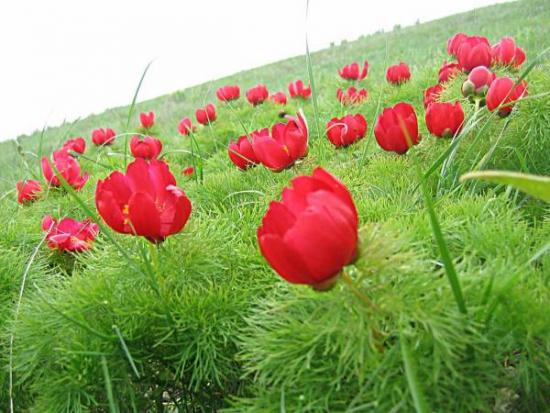
With its spread in garden varieties, it became possible to use wild peony in landscape design.Experts recommend using this type of peony in combination with cereals, broom bushes, eremurus and perennial flax.
Looks great in alpine roller coaster. It will look impressive to plant peonies of different varieties, with different flowering periods, so the early types of peonies will bloom first - Mlokosevich peony, then Maryin Koren, followed by wild peony, then milky-flowered peonies. Wild peony will look good in hills and rocky gardens, in imitation of mountain landscapes.
As already mentioned, grazing of livestock, plowing of the steppes, fires and the eternal desire of man to bring home freshly picked flowers have led to the fact that the wild peony has become an endangered species of plant. It was listed in the Red Book back in the 60s of the twentieth century, and is protected in the Central Black Earth Nature Reserve, but still needs additional conservation. Therefore, the factor of breeding wild peonies in gardens and parks is especially important; this will undoubtedly contribute to the conservation and spread of the species.
The festival is timed to coincide with the beginning of the flowering of wild peony, watch the video:
Interesting information about the vegetable garden


